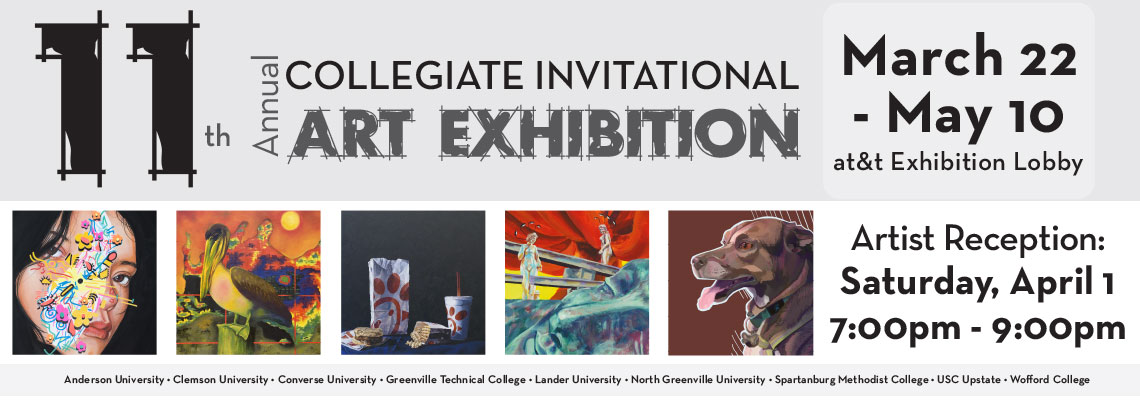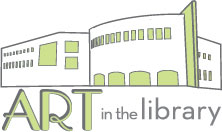The Juror
It was a real pleasure and honor to serve as juror for this fine exhibition. I was delighted by the breadth of talent and the wide range of styles and media. It is quite evident to me that these young artists are well taught and have something to say.
When I encounter a piece of art it is important to me that first of all it must be put together or constructed well. In other words, does it have a foundation of good fundamentals.
The next thing I look for is the meaning or concept. I truly believe that any artistic message will fail if the artist does not have the fundamental tools to help create a viable artwork. That is why it is so important to commit to an art education which not only covers art practice but also study in the fields of language, art history, music, theater, current events and so on. The more you open yourself up to in terms of learning and experience, the more you can pull from to say something about.
I literally enjoyed everything in this show. Every artwork is to be celebrated. However, I did find that after several trips around the gallery, certain pieces had a bit more of an impact for me. Looking at art is very personal. We all have an interior set of criteria borne of experiences, feelings, and interests that determines how we judge and interpret a piece of art. Any artist who takes part in group exhibitions must accept that there are vast possible choices when it comes to awards. My choice of awards is based on my experiences as a professional artist and a Professor of Art who taught for 30 years.
Again, thank you for a great show, and congratulations are also in order to all the fine faculty who are represented by their own strong, professional artwork and the passionate art of their students. It is vital that these young artists are mentored by knowledgeable and compassionate instructors who provide positive and learned opinions and guidance and give their students a safe environment to make mistakes. Lastly, to all of the young artists. Keep making art from the heart, be honest, never give up, and stand tall with your artistic convictions.
- Gerry Wubben
Juror Info
I have been an Art Professor for 30 years and have always believed in a versatile visual exploration that spans different media. I have done work in drawing, painting, sculpture, printmaking, theatre, and recently IPad. I have also explored representational art as well as abstract art. I believe that an artist should listen to their muse, that is why my work is multi-dimensional.
I can draw anything rendered realistically or abstractly cloaked in a veneer of expressiveness. I constantly pursue the essence of my subjects. My mentors are the artists, through history, who have made a lasting impression on the world. My hope and goal is that my work will be included among these. My work is traditional in the sense that I firmly believe in the strength of good drawing skills at the heart of any substantial work of art in any medium. My drawings are realistic, carefully rendered in charcoal, pencil, or ink. They span the intimate, five by seven inches, to the monumental, five by eight feet. My subject matter is from nature- biology, landscape, and figurative. I ultimately prefer charcoal as my main medium because of its versatility in creating texture and tone. Also, it is the ideal tool for creating my monumental drawings in its ability to be deeply expressive.
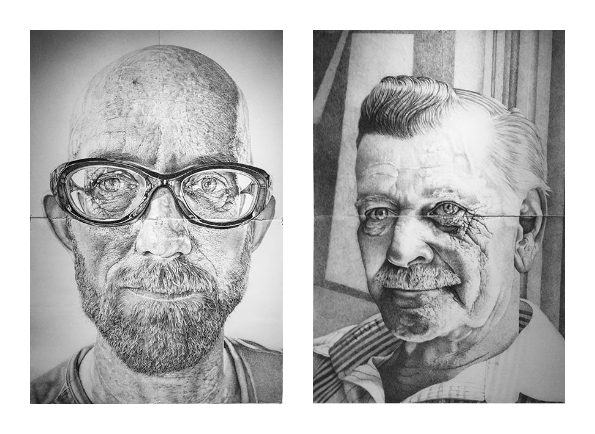
The Schools
The Department of Art + Design at Anderson University offers a Bachelor of Arts in Art degree with concentrations in art education, ceramics, and painting and drawing, along with a Bachelor of Fine Arts degree in Graphic Design. In all our concentrations you'll learn to become a creative problem solver—a crucial skill for visual artists, but also a highly valued and transferable skill in other fields, including business, administration, and leadership.
Accredited by NASAD, the National Association of Schools of Art and Design, our program offers you a rigorous art education without making you move to a big city for college. You'll also benefit from the attentiveness and support of your professors who want to see you excel in both art and life and have a decades-long track record of doing just that.
The quality of our art ed grads inspires school principals to pursue them for job openings. Upon graduating from the Department of Art + Design, you're prepared to compete for graphic design positions at firms and agencies, entry into Master of Fine Arts programs and openings in art education. Our grads have forged careers working as studio artists, designers, art educators, with careers as diverse as art therapy and arts management.
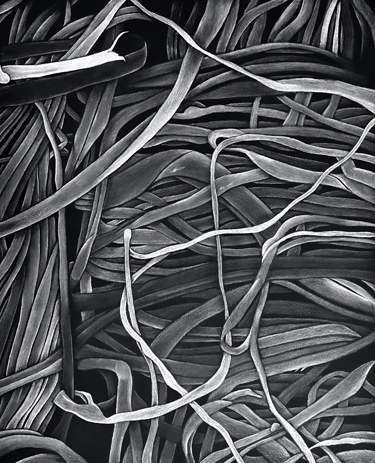
Atrophy by Beth Odum
White Charcoal on Black Paper
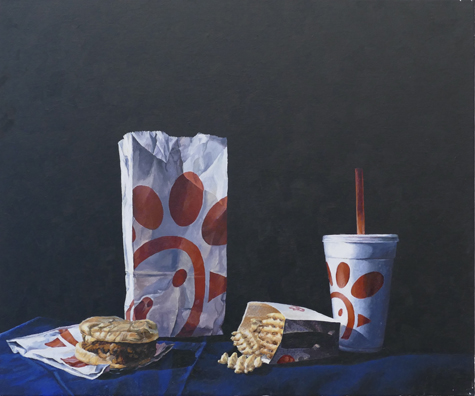
The Combo by Kacie Parks
Acrylic on Canvas
The Department of Art at Clemson University comprises around 100 undergraduates and 18 graduate students enrolled in the visual arts program. We offer two undergraduate degrees, a Bachelor of Fine Arts with concentrations in Ceramics, Drawing, Painting, Photography, Printmaking, and Sculpture, and a Bachelor of Arts in Art with concentrations in Digital Art & Design Media, Studio Art, and Art History. At the graduate level we offer the Master of Fine Arts degree.
Uniquely, our size allows us to frequently conduct team faculty critiques, to maximize the exchange of ideas and methods that arise within the individual studio programs of painting, sculpture, drawing, ceramics, printmaking and photography, as well as animation, graphic design, new media and art history. Our students work and learn in well-equipped studio facilities outfitted with the latest technologies, and we have an ideal average student-to-teacher ratio of 1-to-12 or better. Collaborative projects between faculty and students take place regularly, and we offer unique experiential learning opportunities through creative inquiry projects, on and off-campus internships, and study abroad. In addition to our studios, Art majors have educational access to a spacious art gallery, art and architecture library, computer labs and a materials lab.
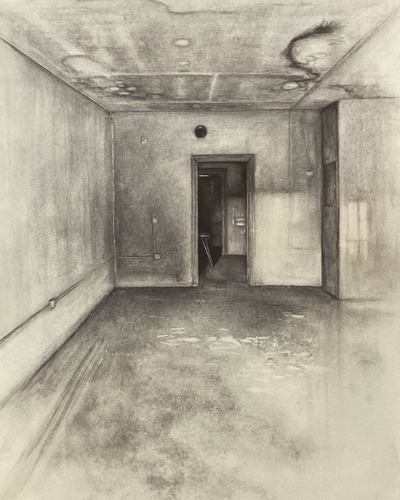
Barren by Sydnay Greene
Watercolor, Ink, Charcoal, Chalk on Watercolor Paper
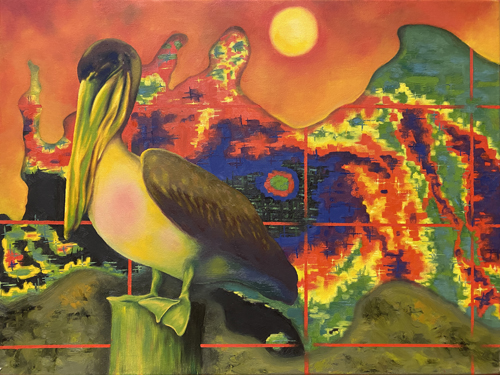
Hugo and the Pelican by Lizetta Halter-MacInnes
Oil on Canvas
From its humble but traditional beginnings as a certificate program in Art and Art History in the early 1900’s, the Department of Art and Design at Converse University is today a robust campus unit with eight undergraduate and graduate academic degree programs. Undergraduate BA degrees include Art Education, Art History, Art Therapy, and Studio Art with BFA degrees in Interior Design and Studio Art. Graduate degrees include MAT in Art Education and the advanced MEd in Art Education. All programs are accredited by the National Association of Schools of Art and Design (NASAD). In addition, our Interior Design program is accredited by the Council for Interior Design Accreditation (CIDA).
Converse University - Art & Design
Ohio is for Lovers by Caitlin Kilpatrick
Screenprint and Collage
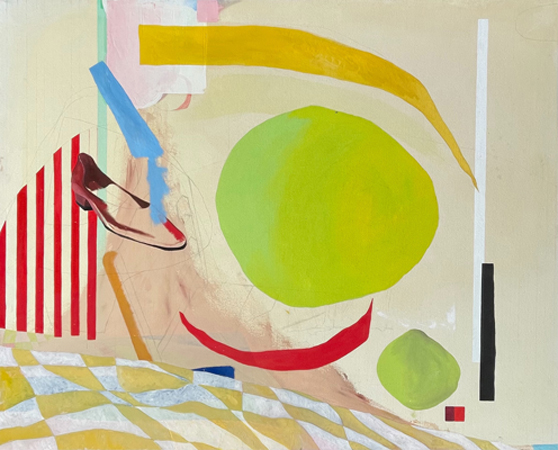
Phone Conversation by Laney Milham
Acrylic, Oil, and Graphite on Canvas
Greenville Technical College’s Department of Visual Arts (DVA) is well respected in the arts community for education that allows graduates to go directly to work in areas such as advertising, web design, and professional photography or to move on to a four-year college with a strong fine art portfolio and the skills to succeed.
Greenville Technical College - Visual Arts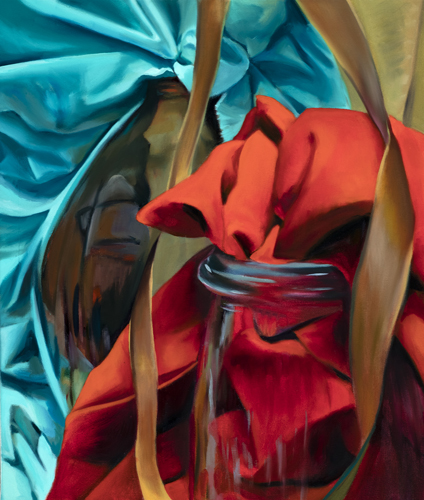
Drapery Study by Heather Fraccalvier
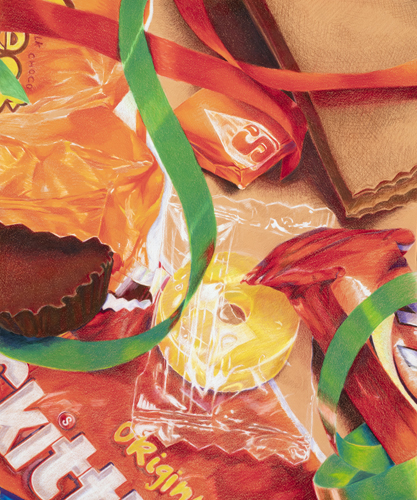
Color Study by Kiara Johnson
The Lander University Art+Design degree programs rigorously prepare students for a professional creative career or an advanced degree in art. Students will master studio techniques in different media of choice while developing an individual conceptual voice. We offer 2D BFA, 3D BFA, BDES and BA Art degrees at the undergraduate level and 2D MFA, 3D MFA and MAT degrees at the graduate level. Students will study with active professional studio faculty in a close-knit educational environment focused on individual instruction. Visit www.lander.edu for more information and follow us on Instagram @landerartplusdesign.
Lander University - Art + Design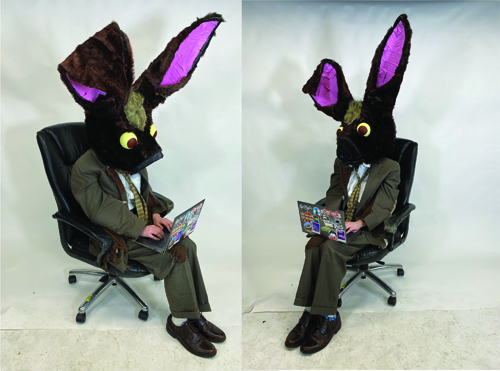
by Christel Maggie Ahern
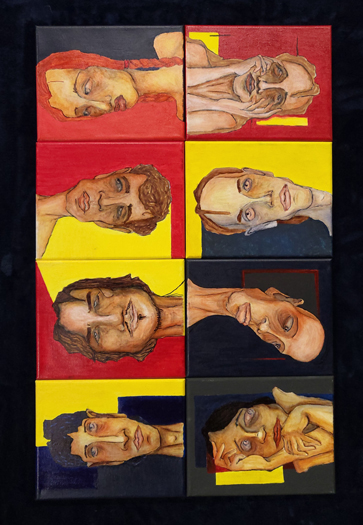
by Anastasia Muzzarelli
The Art Department at North Greenville University seeks to build up the artists that enroll in our program. The areas of emphasis offered within the NGU Art Department are Drawing, Painting, Photography, Ceramics, Sculpture, Printmaking, and Graphic Design. Our curriculum is designed to first provide students with foundational skills in design, and then secondly, help them explore the many technical skills. Thirdly, with a thorough knowledge of artistic design and practiced technical skills in place, students will then tackle the conceptual, which will how they will learn to proficiently speak through their artwork.
North Greenville University - Art Department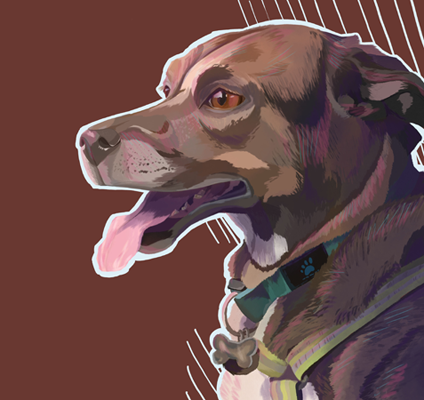
Tyko by Rebecca Cribb
Digital Illustration
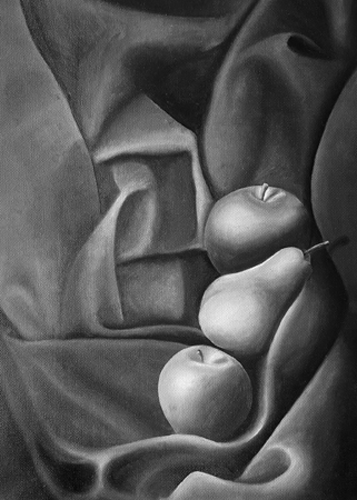
Dreamscape 1 by Renee Drake
Acrylic
Since 1911, Spartanburg Methodist College has led the way in innovation in higher education. Early in our history, we launched the first cooperative education program in the country, and we are South Carolina’s first liberal arts college to make career development the centerpiece of our four-year degree programs. We care deeply about our students and their dreams, and we are dedicated to creating a practical liberal arts degree to help them reach their goals.
Like most small private colleges, we offer small class sizes, personalized support, and quality academics to help our students excel in the classroom. And of course, there are many opportunities for extra-curricular activities that engage students’ diverse talents and interests.
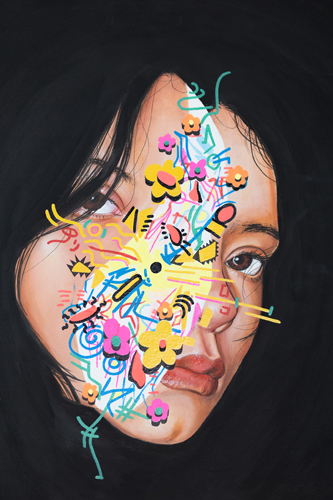
Untitled by Erica Mendez Cortez
Acrylic Paint

Cam Newton by Shelby Allison Lopez-Cortez
Acrylic Paint
Accredited by NASAD, the major national accreditation organization for design and education, USC Upstate offers Bachelor of Arts degrees in Art Education and Art Studio with an emphasis in Graphic Design.
Art Education programs is designed to provide graduates experiences in studio art, art history, educational theories and dispositions that will prepare them to teach effectively which leads to initial certification to teach art in K-12 schools.
Graphic Design students will explore a broad range of content areas—including design theory, history, production, criticism, and aesthetics—resulting in a comprehensive and deep perspective. Courses are designed to discover how graphic design shapes print and web, electronic design, and illustration. The program provides students opportunities to grow skills in creativity, critical thinking, and problem analysis; it also empowers students with insights on the impact of design on global environments. Enable students to respond to global shifts in visual codes proactively and equip them with an ethical mindset that employers value how design can affect the broader society.
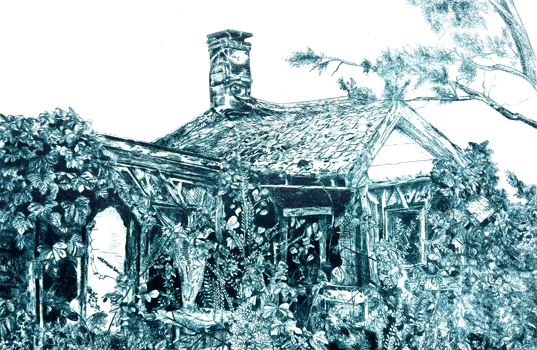
The House with Nobody in It by Petra Banzhof
Drypoint Intaglio
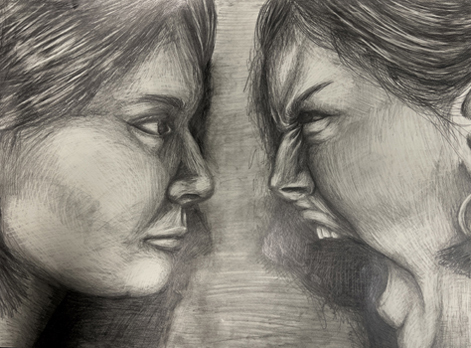
Duality by Madison Sturgill
Graphite on Paper
Students in the Wofford Studio Art program are taught, mentored, and advised by practicing artists and scholars. They develop their own creative voices through the study of a broad range of contemporary and traditional modes of artistic production and can develop skills in design, drawing, painting, sculpture, installation, photography, digital art, printmaking, and ceramics.
Wofford College - Art and Art History
Beneath a Face by Emma Long
GIF on tablet
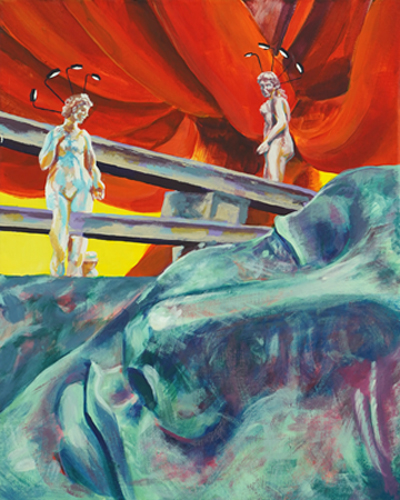
Bananas Are Red by Kate Timbes
